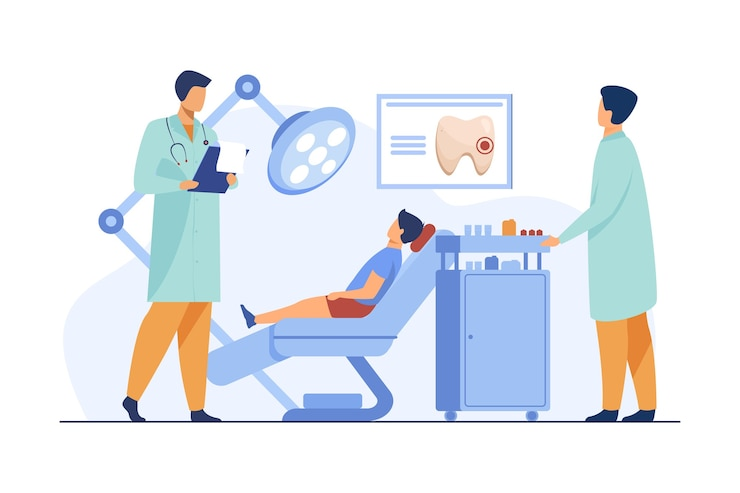
Methods of Sedation Dentistry
Sedation dentistry is the use of drugs to help you relax prior to a dental appointment. The different methods of sedation dentistry Sweetwater TN are IV sedation, oral conscious sedation, and inhaled minimal euthanasia. Here are some things to keep in mind before booking an appointment. All three options have their advantages and disadvantages. In addition, some patients find sedation more comfortable than others. This article will cover the various methods of sedation dentistry and which one is best for you.
Moderate sedation
There are a number of precautions to take when you decide to undergo moderate sedation in dentistry. You should ask about the dentist’s training and experience and review the risks involved. During your procedure, your dentist will monitor your vital signs and make sure that they are within the acceptable range. The American Dental Association provides guidelines for dentists, so make sure to ask your dentist about sedation and the dosage used for you.
When the patient receives sedation, he or she will not remember the procedure and may need tactile stimulation from the dentist to feel comfortable. During a moderate sedation, patients may not be able to communicate their concerns, so a dentist must be available for this. The most extreme form of sedation, general anesthesia, puts the patient completely unconscious and cannot be wakened until the effects wear off.
IV sedation
If you are dreading a dental procedure, IV sedation is an excellent choice for you. This sedative temporarily impairs your cognitive abilities, which means you’ll need someone to drive you home after your appointment. Your dentist near you can give you specific instructions regarding what to wear, which medications to stop temporarily, and which foods to avoid for several hours beforehand. If possible, you should have a family member drive you home after your procedure.
Inhaled sedation involves breathing in nitrous oxide or oxygen through a mask placed over your nose. The sedative will make you feel relaxed while the dentist works. With this method, the dentist can control the amount of sedation, and the patient can drive home immediately afterward. Inhaled sedation also has the added advantage of being the only type of sedation that lets you drive yourself home.
Inhaled minimal sedation
When you have to go to the dentist, you might be tempted to try sedation. However, this type of anesthesia can carry with it a few risks. It’s important to find a dentist with plenty of experience and training in administering anesthesia, and one who knows how to use it safely. You should also read over the form’s risks and ask your dentist any questions you may have. Your dentist will monitor your vital signs throughout the procedure and will have drugs and oxygen on hand in case you have a medical emergency.
Patients undergoing minimal sedation are required to undergo a health screening before being given the medication. Once the screening is complete, Dr. Evans will place a nose mask over the patient’s nose. During the procedure, the patient will breathe through the nose, feeling relaxed and comfortable. Oxygen will be pumped through the mask for a few minutes after the procedure is complete, flushing the nitrous oxide from the patient’s lungs.
Oral conscious sedation
If you have a phobia of visiting the dentist, oral conscious sedation may be the perfect solution. This form of sedation is effective for patients who are unable to remain still for the entire duration of a procedure. Some people suffer from severe dental anxiety, while others may be merely uncomfortable about going to the dentist. Whatever your reason, oral conscious sedation can help you overcome your fear and get the work done without any pain.
Before you choose an oral sedative for your next dental appointment, ask about the dentist’s training and experience in administering sedation. You should ask about the benefits and risks associated with each sedative. Ask your dentist which one would be the most effective for you. If he/she is unsure, ask your dentist for an alternative. Usually, the patient is able to cooperate in the procedure without any difficulty.
Inhaled nitrous oxide
Inhaled nitrous oxide for securing a dental procedure can help you relax before and during your dental procedure. Typically, you will feel a tingling sensation and a sense of dreaminess. However, this sedative has some disadvantages. Before receiving this treatment, it is essential to undergo a health screening to ensure that it is safe for you. Afterward, you will be able to drive home and resume normal activities.
There are several ways to achieve sedation while in the dental chair. The most common is to use nitrous oxide, which is relatively weak and safe. This type of sedative is used by dentists to help their patients feel comfortable during dental procedures. However, you should be sure to discuss your needs with your dentist and understand what the best option for you is. While nitrous oxide is generally considered the safest, it is not the only type of sedative.
